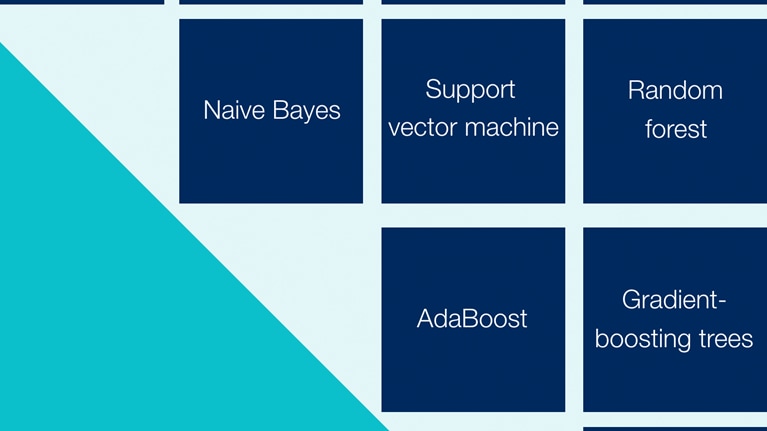The role of artificial intelligence (AI) tools and techniques in business and the global economy is a hot topic. This is not surprising given that AI might usher in radical—arguably unprecedented—changes in the way people live and work. The AI revolution is not in its infancy, but most of its economic impact is yet to come.
New research from the McKinsey Global Institute attempts to simulate the impact of AI on the world economy. First, it builds on an understanding of the behavior of companies and the dynamics of various sectors to develop a bottom-up view of how to adopt and absorb AI technologies. Second, it takes into account the likely disruptions that countries, companies, and workers are likely to experience as they transition to AI. There will very probably be costs during this transition period, and they need to be factored into any estimate. The analysis examines how economic gains and losses are likely to be distributed among firms, employees, and countries and how this distribution could potentially hamper the capture of AI benefits. Third, the research examines the dynamics of AI for a wide range of countries—clustered into groups with similar characteristics—with the aim of giving a more global view.
The analysis should be seen as a guide to the potential economic impact of AI based on the best knowledge available at this stage. Among the major findings are the following:
- There is large potential for AI to contribute to global economic activity
- A key challenge is that adoption of AI could widen gaps among countries, companies, and workers

There is large potential for AI to contribute to global economic activity
The McKinsey Global Institute looked at five broad categories of AI: computer vision, natural language, virtual assistants, robotic process automation, and advanced machine learning. Companies will likely use these tools to varying degrees. Some will take an opportunistic approach, testing only one technology and piloting it in a specific function (an approach our modeling calls adoption). Others might be bolder, adopting all five and then absorbing them across the entire organization (an approach we call full absorption). In between these two poles, there will be many companies at different stages of adoption; the model also captures this partial impact.
By 2030, the average simulation shows that some 70 percent of companies might have adopted at least one type of AI technology but that less than half will have fully absorbed the five categories. The pattern of adoption and full absorption might be relatively rapid—at the high end of what has been observed with other technologies.
Several barriers might hinder rapid adoption and absorption (see video, “A minute with the McKinsey Global Institute: Challenges of adopting automation technology”). For instance, late adopters might find it difficult to generate impact from AI, because front-runners have already captured AI opportunities and late adopters lag in developing capabilities and attracting talent.
Nevertheless, at the global average level of adoption and absorption implied by our simulation, AI has the potential to deliver additional global economic activity of around $13 trillion by 2030, or about 16 percent higher cumulative GDP compared with today. This amounts to 1.2 percent additional GDP growth per year. If delivered, this impact would compare well with that of other general-purpose technologies through history.
A number of factors, including labor automation, innovation, and new competition, affect AI-driven productivity growth. Micro factors, such as the pace of adoption of AI, and macro factors, such as the global connectedness or labor-market structure of a country, both contribute to the size of the impact.
Our simulation examined seven possible channels of impact. The first three relate to the impact of AI adoption on the need for, and mix of, production factors that have direct impact on company productivity. The other four are externalities linked to the adoption of AI related to the broad economic environment and the transition to AI. We acknowledge that these seven channels are not definitive or necessarily comprehensive but rather a starting point based on our current understanding and trends currently under way (Exhibit 1).

The impact of AI might not be linear but could build up at an accelerating pace over time. Its contribution to growth might be three or more times higher by 2030 than it is over the next five years. An S-curve pattern of adoption and absorption of AI is likely—a slow start due to the substantial costs and investment associated with learning and deploying these technologies, then an acceleration driven by the cumulative effect of competition and an improvement in complementary capabilities alongside process innovations.
It would be a misjudgment to interpret this “slow burn” pattern of impact as proof that the effect of AI will be limited. The size of benefits for those who move early into these technologies will build up in later years at the expense of firms with limited or no adoption.

A key challenge is that adoption of AI could widen gaps among countries, companies, and workers
Although Al can deliver a boost to economic activity, the benefits are likely to be uneven.
How AI could affect countries
Potentially, AI might widen gaps between countries, reinforcing the current digital divide. Countries might need different strategies and responses as AI-adoption rates vary.
Leaders of AI adoption (mostly in developed countries) could increase their lead over developing countries. Leading AI countries could capture an additional 20 to 25 percent in net economic benefits, compared with today, while developing countries might capture only about 5 to 15 percent. Many developed countries might have no choice but to push AI to capture higher productivity growth as their GDP-growth momentum slows—in many cases, partly reflecting the challenge due to aging populations. Moreover, in these economies, wage rates are high, which means that there is more incentive to substitute labor with machines than there is in low-wage, developing countries.
Would you like to learn more about the McKinsey Global Institute?
In contrast, developing countries tend to have other ways, including catching up with best practices and restructuring their industries, to improve their productivity. Therefore, they might have less incentive to push for AI (which, in any case, might offer them a relatively smaller economic benefit than it does advanced economies). Some developing countries might prove to be exceptions to this rule. For instance, China has a national strategy in place to become a global leader in the AI supply chain and is investing heavily.
How AI could affect companies
It is possible that AI technologies could lead to a performance gap between front-runners (companies that fully absorb AI tools across their enterprises over the next five to seven years) and nonadopters (companies that do not adopt AI technologies at all or have not fully absorbed them in their enterprises by 2030).
At one end of the spectrum, front-runners are likely to benefit disproportionately. By 2030, they could potentially double their cash flow (economic benefit captured minus associated investment and transition costs). This implies additional annual net cash-flow growth of about 6 percent for longer than the next decade. Front-runners tend to have a strong starting IT base, a higher propensity to invest in AI, and positive views of the business case for AI.
At the other end of the spectrum, nonadopters might experience around a 20 percent decline in their cash flow from today’s levels, assuming the same cost and revenue model as today. One important driver of this profit pressure is the existence of strong competitive dynamics among companies that could shift market share from laggards to front-runners and might prompt debate about the unequal distribution of the benefits of AI (Exhibit 2).

How AI could affect workers
A widening gap might unfold at the level of individual workers (see video, “A minute with the McKinsey Global Institute: What AI can and can’t [yet] do”). Demand for jobs could shift away from repetitive tasks toward those that are socially and cognitively driven and require more digital skills. Job profiles characterized by repetitive activities or that require a low level of digital skills could experience the largest decline as a share of total employment to around 30 percent by 2030, from some 40 percent. The largest gain in share could be in nonrepetitive activities and those that require high digital skills, rising from roughly 40 percent to more than 50 percent.
Notes from the frontier: Modeling the impact of AI on the world economy
These shifts would have an impact on wages. We simulate that around 13 percent of the total wage bill could shift to categories requiring nonrepetitive and high digital skills, where incomes could rise, while workers in the repetitive and low-digital-skills categories could experience a stagnation or even a cut in their wages. The share of the total wage bill of the latter group could decline to 20 percent, from 33 percent.
A direct consequence of this widening gap in employment and wages would be an intensifying war for people, particularly those skilled in developing and using AI tools. On the other hand is the potential for structural excess supply for a still relatively high portion of people lacking the digital and cognitive skills necessary to work with machines.
Overall, the adoption and absorption of AI might not have a significant impact on net employment. There will likely be substantial pressure on full-time-employment demand, but the total net impact in aggregate might be more limited than many fear. Our average global scenario suggests that total full-time-equivalent-employment demand might remain flat, or even that there could be a slightly negative net impact on jobs by 2030.
The opportunity of AI is significant, but there is no doubt that its penetration might cause disruption. The productivity dividend of AI probably will not materialize immediately. Its impact is likely to build up at an accelerated pace over time; therefore, the benefits of initial investment might not be visible in the short term. Patience and long-term strategic thinking will be required.
Policy makers will need to show bold leadership to overcome understandable discomfort among citizens about the perceived threat to their jobs as automation takes hold. Companies will also be important actors in searching for solutions on the mammoth task of skilling and reskilling people to work with AI. Individuals will need to adjust to a new world in which job turnover could be more frequent, they might have to transition to new types of employment, and they likely must continually refresh and update their skills to match the needs of a dynamically changing job market.
Using historical trends of new jobs created to old jobs, and adjusting for a lower labor-output ratio that considers the likely labor-saving nature of AI technologies via smart automation, new jobs driven by investment in AI could augment employment by about 5 percent by 2030. The total productivity effect could have a positive contribution to employment of about 10 percent.


